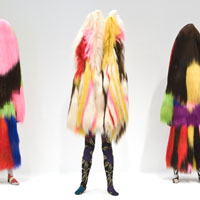


While technically the Halsey Institute of Contemporary Art is part of the College of Charleston, it plays a significant role in Charleston’s vibrant art scene. Mark Sloan has overseen more than 100 exhibitions (plus an annual Young Contemporaries exhibit that features a curated collection of work by CofC students) during his 20-year stint as Chief Curator and Director.
Mark, we’ll began our conversation with the organization’s mission and how that relates to making the arts an important part of life (and livability) in Charleston.
The mission was developed over several months, so I really need to share it in its entirety:
The Halsey Institute of Contemporary Art at the College of Charleston School of the Arts provides a multidisciplinary laboratory for the production, presentation, interpretation, and dissemination of ideas by innovative visual artists from around the world. As a non-collecting museum, we create meaningful interactions between adventurous artists and diverse communities within a context that emphasizes the historical, social, and cultural importance of the art of our time.
Whew! I know that sounds like a lofty set of goals, but it does establish how we, the School, the College, and our Advisory Board, see the Halsey in the ecology of Charleston’s primary art institutions – including the Gibbes Museum of Art, City Gallery at Waterfront Park, and Redux Studios. We’ve established a distinct niche for our academic museum, hosting emerging, overlooked, and often under-represented artists. Every exhibition includes a range of events and educational opportunities – most free and open to the public – including film and video, publications, lectures, and artists-in-schools.
We try to emphasize the footprint of the College within the city, especially given that the Halsey is really many people’s portal into the entire institution, both literally – with our windows on one of the busiest blocks on Calhoun Street – and, figuratively – since one does not typically march into a biology class on campus. Not only do we function for Charlestonians in this way, but we are also a unique arts destination for visitors to Charleston, offering distinct, often challenging, work from unexpected sources.
Mark, I’ve known you to be very generous with your expertise and guidance to other area arts organizations, and you’ve been a willing participant in collaborative efforts. Along those lines, what would you do if you were “Mayor?”
At the Halsey we have found that students, patrons, and staff all benefit from being unafraid to ask the “big questions,” and this has meant that we have been able to show unusual, challenging, and often experimental work. We need to cultivate Charleston artists that are empowered to explore their own passions and questions in precisely this kind of work; and foster their efforts so they can also flourish and find success in Charleston and elsewhere. Establishing an infrastructure of best practices, including resources such as legal and accounting advice, can help guide artists’ careers so they might be unburdened by some of these realities.
We can meet our cultural aspirations if we are willing to collaborate effectively, eliminate redundancies, and encourage efforts that provide a mutual benefit between our institutions, organizations, artists, students, and Charleston residents. The arts can be a plan for life, inspiring individuals and cities with the knowledge that the future will require significant reservoirs of creativity and innovation to ensure our continued success.